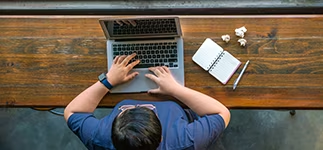
Hamas terrorist Ahlam Tamimi recounted in a TV interview the roles and missions she had performed in a Hamas terror cell, which had carried out terror attacks in Israel in the early 2000s. She told the interviewer how she had located schools and shops as potential bombing targets and how she had planted a bomb in a Jerusalem supermarket. Tamimi played a major role in the 2001 Jerusalem Sbarro restaurant suicide bombing - in which 15 Israelis and tourists were killed - planning the attack and accompanying the suicide bomber. Tamimi told the interviewer that she had used her journalist union card to get in and out of Jerusalem and that she had surveilled civilian targets - such as schools and restaurants - in an effort to maximize casualties. The two-part interview was aired on Kuwaiti channel Iqraa TV, and was posted on YouTube on June 27-28, 2012.
Ahlam Tamimi: "I was a journalism student, in the political science track, and I was working in the media and the press. This allowed me to become a member of the Palestinian Journalists Union. The union card enabled me to enter Jerusalem in order to conduct interviews. This drew the attention of the 'Izz Al-Din Al-Qassam Brigades. They realized that I could enter and leave Jerusalem, without the knowledge of the Zionists."
[...]
Host: "So you would go in and out in your capacity as a journalist. Nice."
Ahlam Tamimi: "Yes. This was one of God's miracles and facilitations. This made them ask me to join the 'Izz Al-Din Al-Qassam Brigades, and I immediately accepted.
[...]
"I was assigned three missions. The first mission was to spot locations suitable for Jihadi operations. I would go to Jerusalem and walk around in the areas frequented by the Zionists.
[...]
"I would go around these areas, and as part of my first mission, I would surveil suitable locations, such as shops, malls, schools, and restaurants – any suitable target for a Jihadi operation. I would submit reports to the cell commander, and this report would be studied statistically: How many Israelis enter a certain location in one hour? I would sit there, look at my watch, and count the number of people who entered the place in an hour. I would calculate it and report that if the operation were to take place at a certain hour, the number of Israeli casualties would be at least 30 and could even reach 50, because during this specific hour, 70 Israelis entered the place.
"I would also check what the most suitable hours were. For example, a restaurant is frequented by Zionists mostly during lunchtime, a school in the morning... There was an optimal time to carry out the Jihadi operation, and I would write all of this in the report, which I sent to the cell commander. The cell commander, Abdallah Al-Barghouti, is now in solitary confinement. Everybody knows him, but I knew it was Al-Barghouti only after my arrest, and after he was arrested and said that he was the military commander. Due to the clandestine nature of our work, we didn't say our names. But after the arrests, it was all published.
"My second mission was to carry out Jihadi operations. I was assigned this mission. I would take explosive devices, which were prepared by Abdallah Al-Barghouti. I would choose the shape of the device, according to the most popular shopping items among the Zionists. I would submit a report that the most popular drink is this, that or the other, or that the item that sells the most is this or that. The explosive device would be produced in the shape of that item. On the outside, it looked like I was carrying one of their items, but on the inside, it was a time bomb.
"I learned how to operate one of those explosive devices, and I took it to a supermarket in our occupied Jerusalem. It was the King George supermarket. I had previously conducted surveillance of that supermarket. I placed the explosive device, bought something, and left normally. The device was set to go off on the hour. I placed it, activated it, and left the place. The supermarket completely exploded. At the time, the Israelis said that nobody had been killed or wounded.
"This was the beginning of the Intifada, and it was normal for them to conceal the number of casualties, in order to avoid panic among the Zionists."













